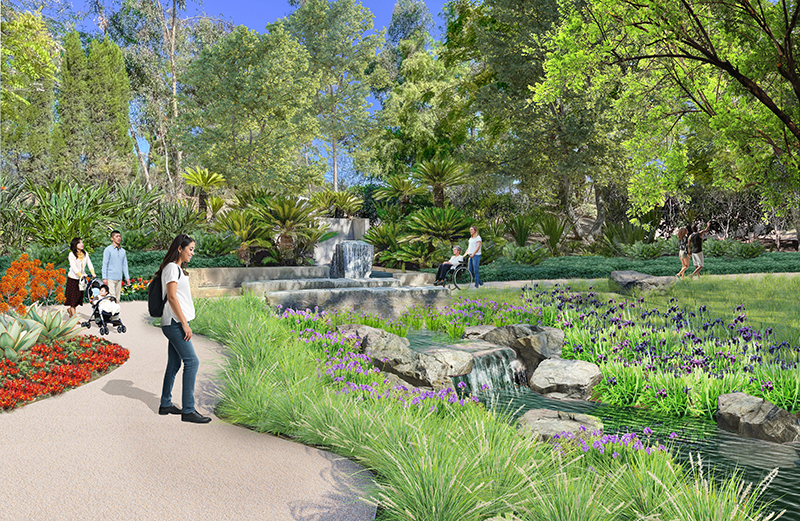Exterior Improvement Project: A Spotlight on Changes to the Sculpture Garden

Rendering of the Museum’s Sculpture Garden, courtesy of ARG and SWA
For visitors and staff alike, the spring and summer months in the Museum’s Sculpture Garden are an especially lovely time. With the garden currently closed for repairs and enhancements as part of our Exterior Improvement Project, I thought I’d highlight some of the more significant changes you will soon encounter.
The Pond
When the Sculpture Garden was designed by Nancy Goslee Power in the 1990s, the Museum didn’t have a café, nor did it organize events or public programs. As such, the garden’s primary feature was a large, naturalistic pond that stretched nearly the entire length of the space, starting just steps outside the lobby doors. When the pond needed a new liner and repairs to its filtration system, we decided to take this opportunity to reduce its size, most noticeably pushing it further out from the Main Entrance Gallery. This configuration will alleviate the congestion that can occur during major events and exhibition receptions.
Another improvement will be in the northwest corner of the garden, where Power’s distinctive granite fountain will now be connected to the pond, creating harmony between the two water features while also improving their filtration systems. Present in Power’s original concept drawings from the 1990s but never realized, this connection will result in a beautiful cascade effect. Water from the fountain will pass underneath a pedestrian bridge and trickle down to the pond, which will be at a lower elevation than before.
Paths & Seating
The garden’s decomposed granite paths are being replaced with permeable resin-bound paving, maintaining the organic look of the garden but offering a more stable surface. These new paths will allow the garden to remain open more frequently during the rainy season. Additional seating, including seat walls lining the southern edge of the pond and benches sprinkled in the western portion, will better accommodate our visitors.
Swales & Drainage
Because the region experiences torrential rainstorms, redesigning and rebuilding the garden’s drainage system was a critical element of the Exterior Improvement Project. The previous drains had become damaged by root invasion and blocked with debris, including decomposed granite from the paths, which frequently washed into the drains. The engineering and landscape teams have designed a series of swales and bioswales throughout the garden to capture rainwater and allow it to seep deep into the ground, improving the garden’s ecological health. During especially heavy rains, the swales are designed to fill up and either spill into the pond or funnel out through the storm drain system, ensuring the safety of the building and the works of art it contains.
These are just some of the refinements you will discover in early fall, when we complete the Exterior Improvement Project. I hope to see you enjoying a meal or snack pond-side, taking in the changes and enjoying this special corner of the Museum once again.
—Leslie Denk, Vice President of External Affairs
This article first appeared in the Museum’s Spring/Summer 2025 Newsletter.
